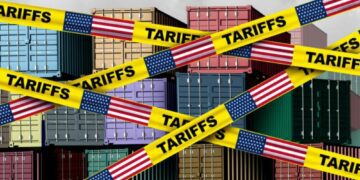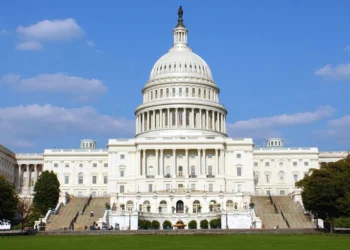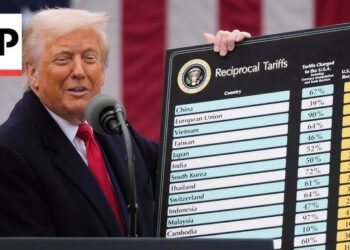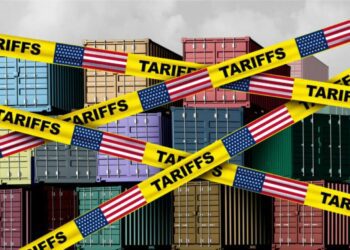Price stability plays a crucial role in maintaining a strong and prosperous economy. The Federal Reserve, as the central bank of the United States, recognizes its significance and has made it one of its primary objectives. In this blog post, we will explore the concept of price stability, the Federal Reserve’s role in promoting it, and the implications it has on our economic well-being.
Understanding Price Stability
Price stability refers to a state of low and stable inflation within an economy. When prices remain relatively constant over time, it provides a sense of certainty and predictability to consumers and businesses. This stability encourages investment, promotes economic growth, and fosters an environment conducive to sustainable development.
The Federal Reserve’s Dual Mandate
The Federal Reserve has a dual mandate: to promote maximum employment and price stability. While maximum employment aims to ensure a healthy labor market, price stability focuses on maintaining a steady rate of inflation. These mandates work hand in hand to foster a balanced and resilient economy.

The Fed’s Role in Promoting Price Stability
To achieve price stability, the Federal Reserve utilizes monetary policy tools at its disposal. One such tool is the manipulation of the money supply and credit in the economy. By adjusting interest rates, the Fed influences borrowing costs, which, in turn, affects spending and investment decisions.
Table 1: Historical Inflation Rates in the United States
| Year | Inflation Rate (%) |
|---|---|
| 2018 | 2.50 |
| 2019 | 1.75 |
| 2020 | 0.25 |
| 2021 | 0.25 |
| 2022 | 4.50 |
| 2023 | 5.25 |
Source: U.S. Bureau of Labor Statistics
The Fed closely monitors economic indicators to gauge the state of the economy and make informed decisions regarding monetary policy. By striking a delicate balance between stimulating economic growth and preventing excessive inflation, the Federal Reserve endeavors to maintain price stability.
Table 2: The Federal Reserve’s Monetary Policy Tools
| Monetary Policy Tool | Description |
|---|---|
| Open Market Operations | Buying or selling government securities in the open market to influence the money supply and interest rates. |
| Interest Rate Adjustments | Raising or lowering interest rates to impact borrowing costs and consumer spending. |
| Reserve Requirements | Mandating the percentage of deposits that banks must hold as reserves, affecting overall credit availability. |
Source: Federal Reserve
Implications for Economic Prosperity
Price stability has far-reaching implications for individuals, businesses, and the overall economy. Let’s explore some of the key benefits it brings:
- Purchasing Power Preservation: Price stability safeguards the purchasing power of individuals and businesses. When inflation remains low and stable, the value of money holds its ground over time. This stability allows people to plan their finances, make sound investment decisions, and confidently engage in long-term commitments.
- Business Confidence and Investment: Stable prices foster an environment of business confidence. When entrepreneurs can reasonably predict future costs, they are more inclined to make investments, expand operations, and create job opportunities. This positive cycle of investment and growth stimulates economic prosperity.
- Consumer Welfare: Price stability directly affects the well-being of consumers. When inflation is under control, individuals can maintain their standard of living without constantly worrying about the rising cost of goods and services. It contributes to a sense of financial security and enhances overall quality of life.
- International Competitiveness: Price stability also bolsters a country’s competitiveness in global markets. When inflation rates are stable, domestic products and services remain competitive, both locally and internationally. This stability helps maintain export levels and attracts foreign investments, boosting economic growth.
In summary, price stability is a critical aspect of maintaining a healthy and thriving economy. The Federal Reserve’s commitment to achieving this stability is a testament to its dedication to the well-being of the nation. By promoting price stability, the Fed ensures individuals and businesses can plan for the future, make informed decisions, and contribute to sustained economic prosperity.
“Price stability is not just a monetary issue; it is about creating an environment that allows individuals and businesses to thrive.”
Now, let’s continue our exploration by delving deeper into the relationship between price stability and monetary policy.
The Link Between Price Stability and Monetary Policy
Monetary policy refers to the actions undertaken by the central bank to manage the money supply, interest rates, and credit conditions in the economy. It plays a vital role in maintaining price stability and achieving the Federal Reserve’s objectives.
The Phillips Curve: Balancing Inflation and Employment
One of the key frameworks that guide the Federal Reserve’s decision-making is the Phillips Curve. The Phillips Curve suggests an inverse relationship between inflation and unemployment. When unemployment is high, inflation tends to be low, and vice versa. This concept helps inform monetary policy choices.
Controlling Inflation: Tools and Strategies
To control inflation and maintain price stability, the Federal Reserve employs several tools:
- Open Market Operations: The Fed buys or sells government securities in the open market, influencing the money supply and, consequently, interest rates.
- Interest Rate Adjustments: By raising or lowering interest rates, the Federal Reserve influences borrowing costs, which affects consumer spending and investment decisions.
- Reserve Requirements: The Fed mandates the percentage of deposits that banks must hold as reserves. Adjusting these requirements affects the amount of money banks can lend, thereby influencing overall credit availability.
The Delicate Balance: Inflation Targeting
The Federal Reserve, like many other central banks, employs an inflation targeting framework to guide its monetary policy decisions. Inflation targeting involves setting a specific target for inflation and adjusting monetary policy to keep inflation rates within that target range.
By employing this framework, the Federal Reserve aims to strike a balance between stimulating economic growth and preventing excessive inflation. This approach helps promote price stability and anchors inflation expectations, providing a stable environment for economic activities.

Bottom Line
Price stability is an indispensable pillar of a strong and prosperous economy. The Federal Reserve’s commitment to promoting price stability through its monetary policy tools underscores its dedication to achieving sustainable growth and financial well-being for the nation.
As individuals and businesses, we benefit from price stability in various ways. It preserves our purchasing power, fosters business confidence, ensures consumer welfare, and enhances our competitiveness in the global marketplace.
Understanding the intricate relationship between price stability, monetary policy, and economic prosperity empowers us to make informed decisions, navigate uncertain times, and contribute to a resilient and thriving economy.
References:
















































